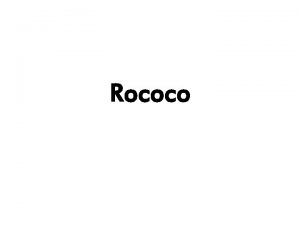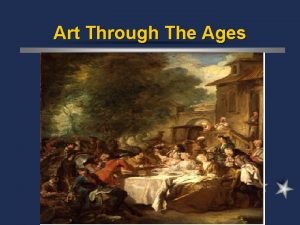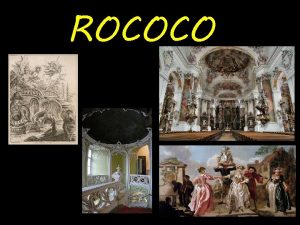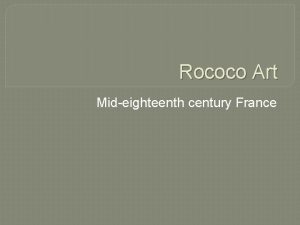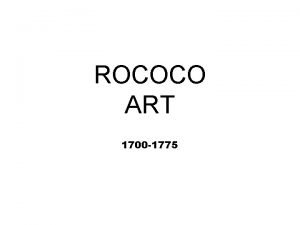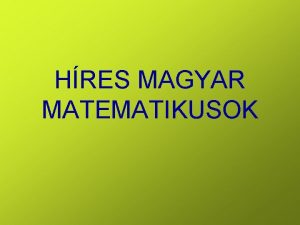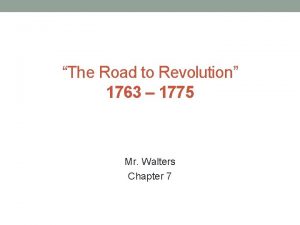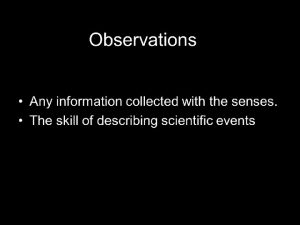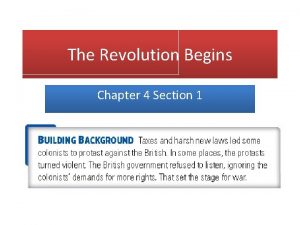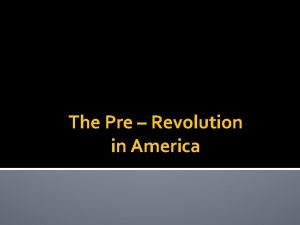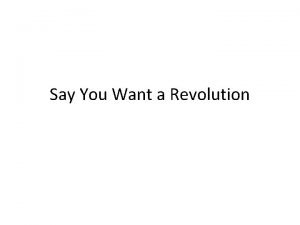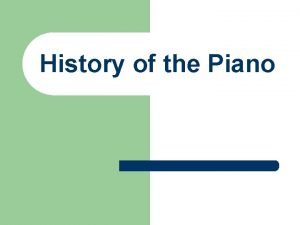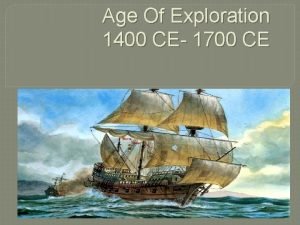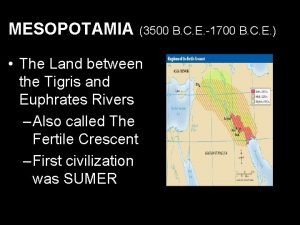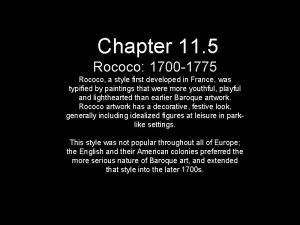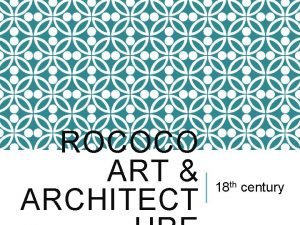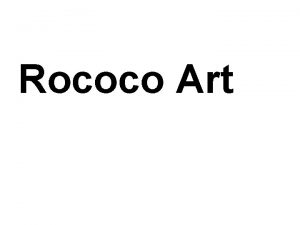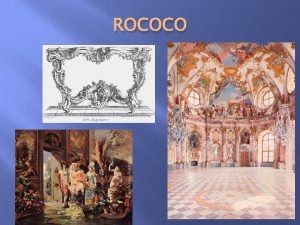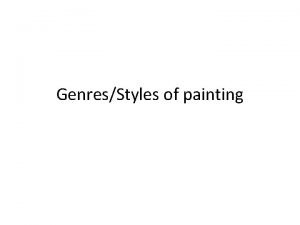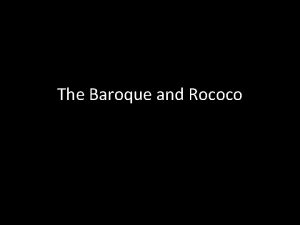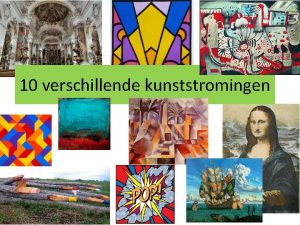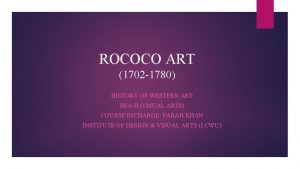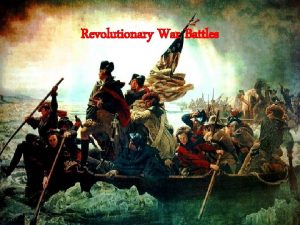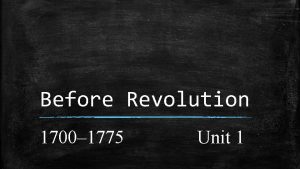ROCOCO ART 1700 1775 Rococo is a term




















- Slides: 20

ROCOCO ART 1700 -1775

Rococo is a term that derives from the French word ‘rocaille’ which means rock-work, referring to a style of interior decoration that swirls with arrangements of curves and scrolls. The style was essentially French but spread throughout Europe. As Mannerism was a stylistic reaction to Renaissance art, so Rococo was a decorative response to the realism of Baroque. While some authorities consider Rococo to be a refined, elegant, and allegorical style, others judge it as pompous, indulgent and pretentious. Notable Rococo artists were Watteau, Boucher and Fragonard in France, Tiepolo, Guardi and Canaletto in Italy, and to some extent Hogarth in England.

The Music Room from Norfolk House, St James's Square, London Rococo design is often not symmetrical. Curved forms are common in Rococo. They often resemble the letters S and C


Weiskirche Bavaria, Germany Basilica at Ottobeuren

Venus and Cupid 1750 -1760 Boucher, pastoral and mythological scenes, work embodies the frivolity - Francois Boucher and sensuousness of the rococo style

The Swing By Jean-Honore Fragonard, 1760 It is considered to be one of the masterpieces of the rococo era, and is Fragonard's best known work.

NEO-CLASSIC ART 1765 -1850

Neoclassicism was a reaction against the pomposity of Rococo. This was the Age of the Enlightenment and political, social and cultural revolution were in the air. Artists needed a serious art for serious times and once again they looked back to the art of Antiquity as their model. Inspired by the archaeological discoveries (a new science) at Herculaneum and Pompeii, Neoclassicism had a historical accuracy that earlier classical revivals lacked. Historical scenes of heroism and virtue were used as patriotic propaganda or allegories on contemporary circumstances. Jacques Louis David and Jean Auguste Dominique Ingres were the outstanding virtuosos of Neoclassical painting.

Death of Socrates by French artist Jacques-Louis David, 1787 (The Louvre, Paris)

Death of Socrates by Jacques-Philip. Joseph de Saint-Quentin, 1738

Oath of the Horatii by French artist Jacques-Louis David, 1784 (The Louvre, Paris) click

click


LATER ART (to be covered in next unit)

The Death of Marat, Jacques-Louis David 1793 Napoleon Crossing the Alps, Jacques-Louis David 1793


ROMANTIC ART 1765 -1850

Romanticism valued the expression of emotion over the control of Classicism. This was achieved through spectacular painting technique and the choice of emotive and sensual subjects which often commemorated dramatic contemporary and historical events. In France, Delacroix and Géricault were the pioneers of Romanticism; in England, it was Turner and Constable; in Germany, Caspar David Friedrich and in Spain, Goya.

Liberty Leading the People, Eugene Delacroix 1830
 Characteristics of rococo
Characteristics of rococo Rococo art characteristics
Rococo art characteristics Definition of rococo
Definition of rococo Rococo art
Rococo art The rococo art movement was born out of
The rococo art movement was born out of Rococo art
Rococo art Classical period 1750 to 1820 romantic period
Classical period 1750 to 1820 romantic period Stipta
Stipta 1775-mr4
1775-mr4 Battle of lexington and concord winner
Battle of lexington and concord winner Hans gross
Hans gross May 1775
May 1775 May 1775
May 1775 What is the significance of july 4 1776 brainpop
What is the significance of july 4 1776 brainpop May 1775
May 1775 Defines the request mast policy for marines
Defines the request mast policy for marines Lexile analyzer
Lexile analyzer Eric weiner fdny
Eric weiner fdny Piano 1709
Piano 1709 1700 ce
1700 ce Dynastic cycle def
Dynastic cycle def
